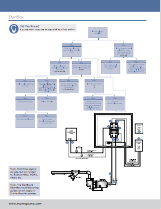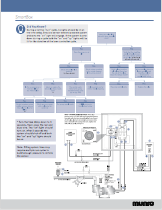Take a look at this diagram from our Munro Troubleshooting Guide:

Take a look at this diagram from our Munro Troubleshooting Guide:

You may not have enough voltage going to either the contactor or coil. Use a volt meter to check voltage.
On the contactor, the voltage should match the incoming voltage from the breaker. Be sure to put your leads on the L1 and L2 - not ground to L1 or L2. This will show the true voltage going to the contactor. If the voltage at the contactor is lower than the voltage at the breaker, you may have a break in your electrical line.
Another possibility is that the irrigation controller does not produce enough voltage to energize the coil. To measure incoming voltage, connect the volt meter to the white and black leads. If incoming voltage is less than 18 volts, the incoming voltage from the irrigation controller may not be strong enough and will make the contactor buzz.
A third possibility is that there may be debris in the contacts. Turning your pump on and off, rapidly, at the irrigation controller could dislodge debris that may be interrupting the signal.
In the MPLC24, the contactor needs more than .35 amps to active the coil. If the irrigation controller delivers less than .35 amps, a Munro SmartBox - Reduced Incoming Amperage (MPLC242W22 (230v pump) or MPLC242W11 (110V pump)) is required. The Munro SmartBox - Reduced Incoming Amperage box accepts a low amperage start/stop signal, to provide all of the benefits of the standard SmartBox, including loss of prime and run-dry protection, even when signal amperage is reduced. This is commonly seen in 2-wire systems and with super economical irrigation controllers (big box stores).